Occasionally we come across a project idea that cannot be fulfilled by someone at the museum, either because there is not enough time or because no one has the particular expertise needed. So when these instances occur, we are very grateful when we can find volunteers who are able to fill in these holes in our staff. One current project where this is the case is with our Japanese wood block prints, cataloging and researching them. In this case, we were fortunate enough to come across Rachel Berman, who has a Master’s degree in East Asian art and has been kind enough to volunteer to work on our Japanese prints.
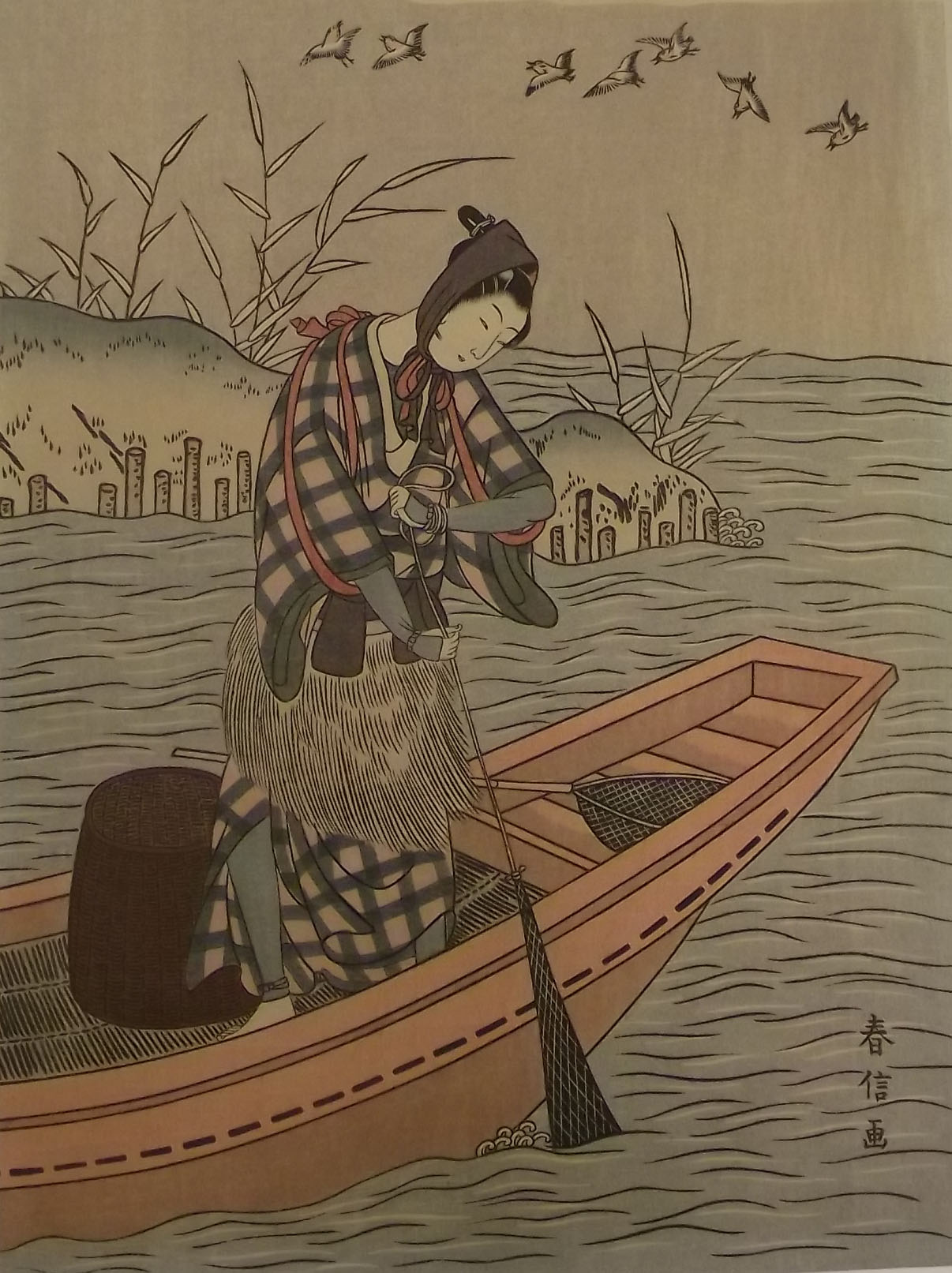
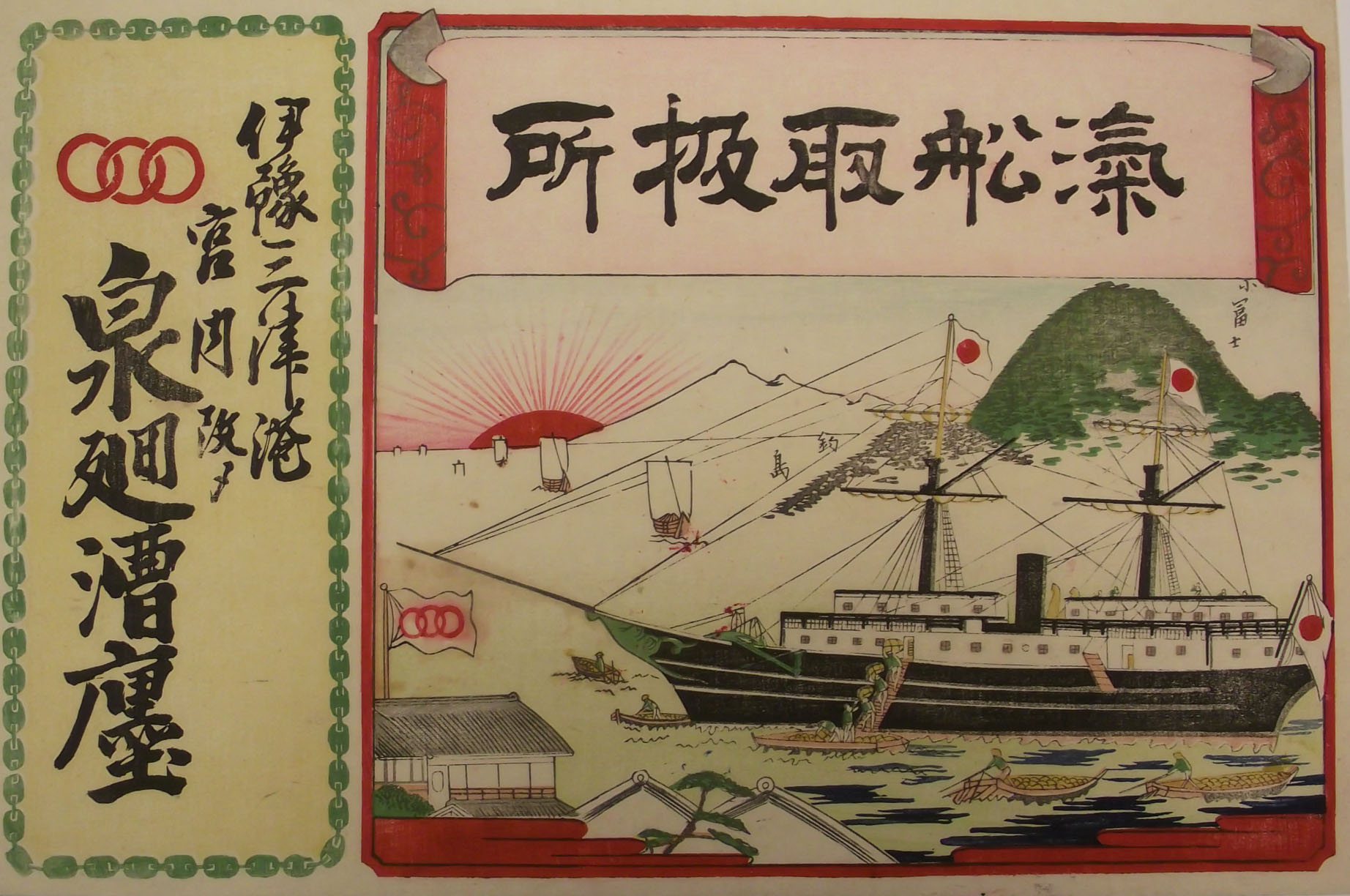
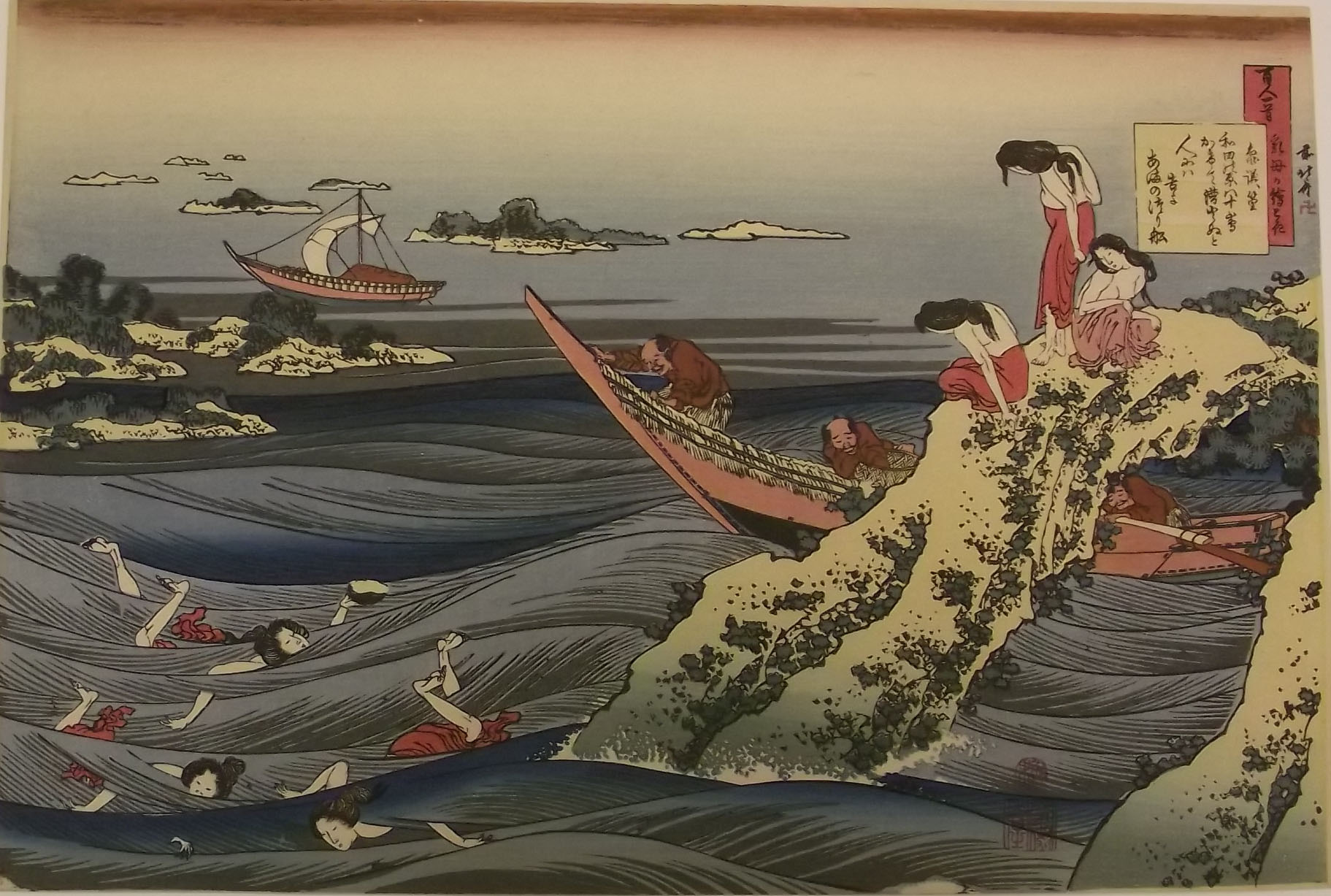
Above are three beautiful examples of the Japanese prints, which are very colorful and eye-catching. I particularly like the first one as it appears to be an ordinary woman performing an everyday task. Rachel’s input on these pieces will be incredibly valuable to us as we have translations (although not always completely correct), but we do not know much beyond that. She will help us learn about any history of the piece or significance, including some that have owner’s stamps on them. Rachel will also be checking our translations to make sure that they are correct. After the project is complete, this information will be put into the object files for future reference, as well as into our computer database so anyone researching us online will be able to find this information.
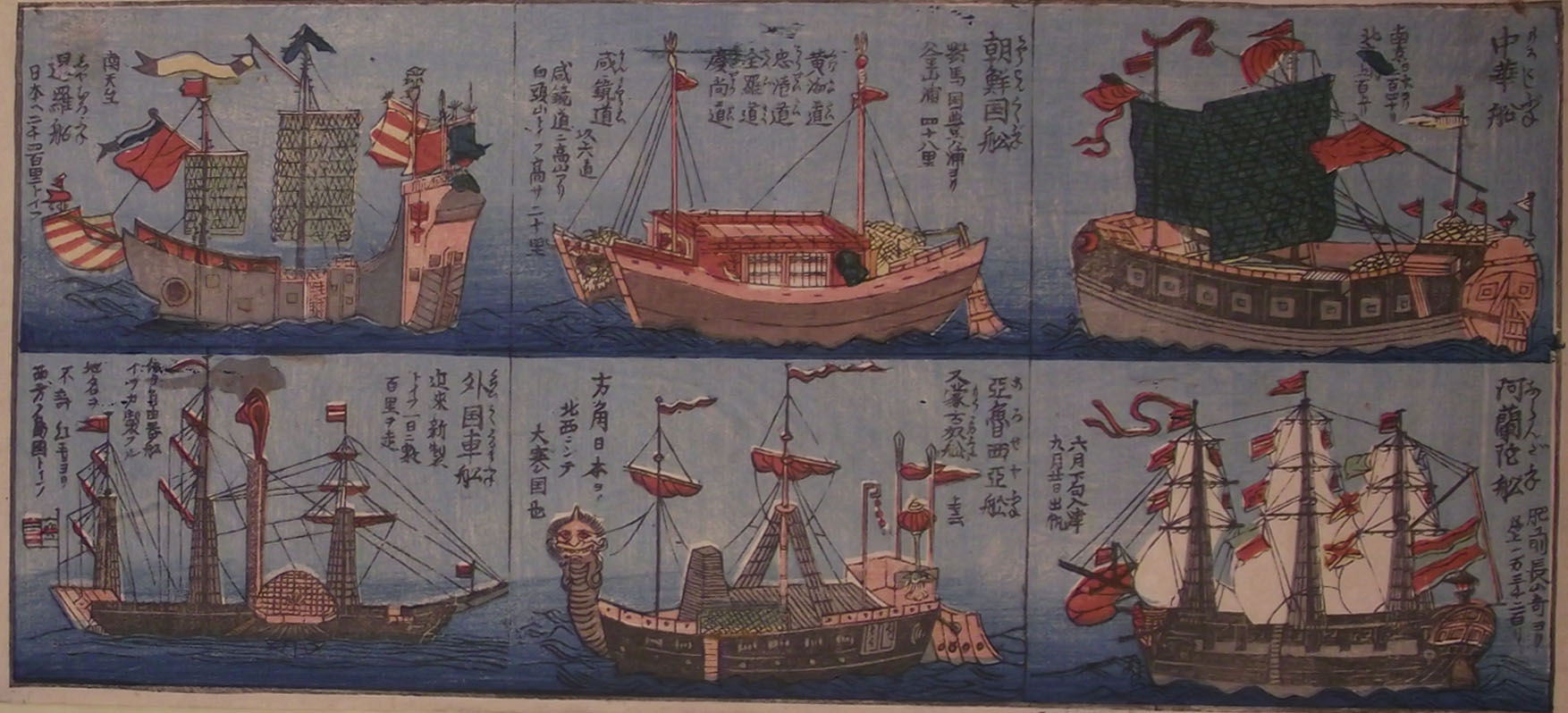
I also like the depictions of ships in this print, with the one in the bottom center being my favorite. The face on the figurehead reminds me of a Balinese carving we have in the collection, which was featured a couple of blog entries ago. When Rachel has finished with her project, hopefully she’ll have a chance to write an entry about some of her favorite pieces and share some information on this part of our collection with all of our readers.
Our Japanese prints aren’t the only pieces in the collection we need cataloged though. We also have a collection of Pacific/Alaskan stone tools that really need to be looked at by someone who is very familiar with them.
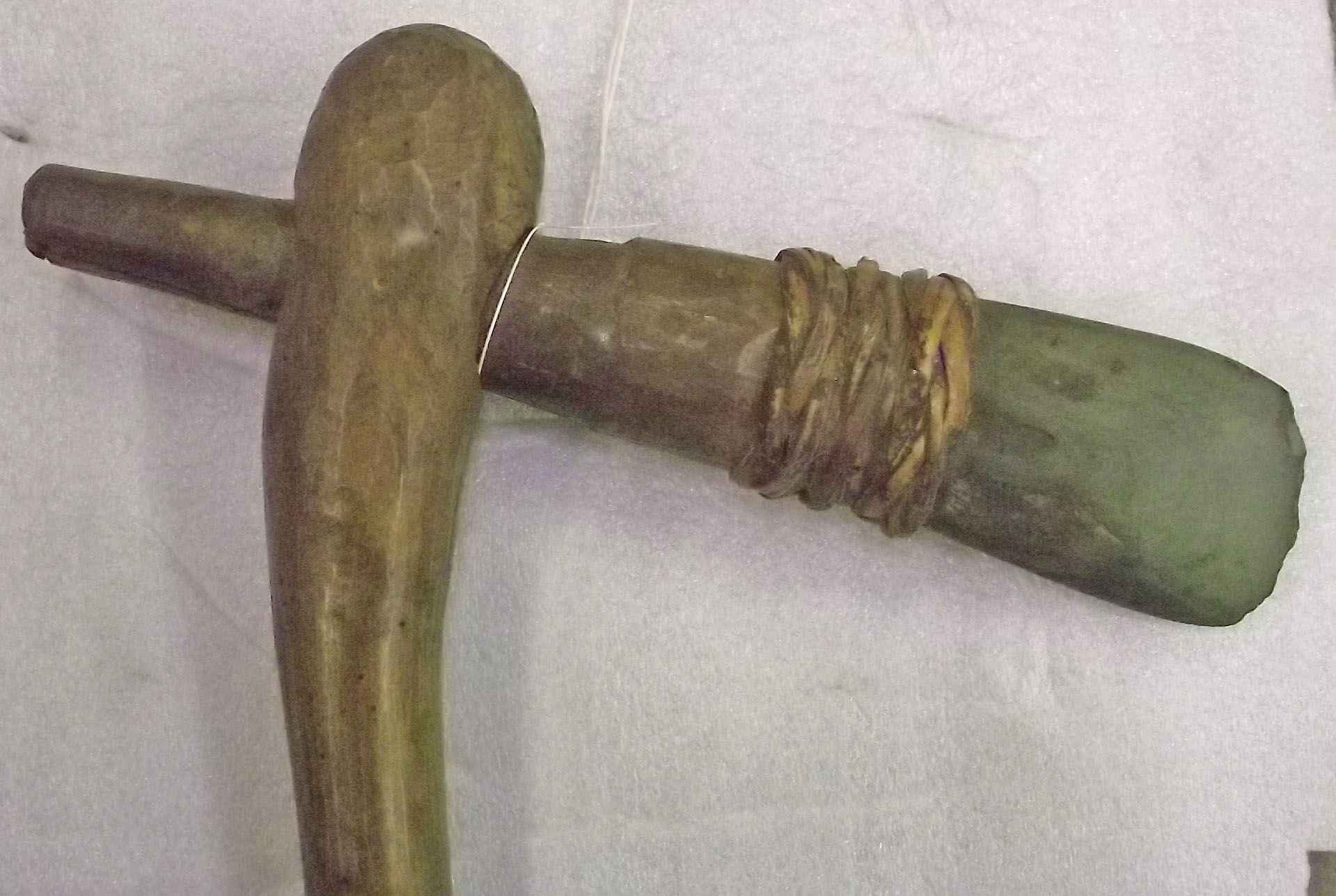
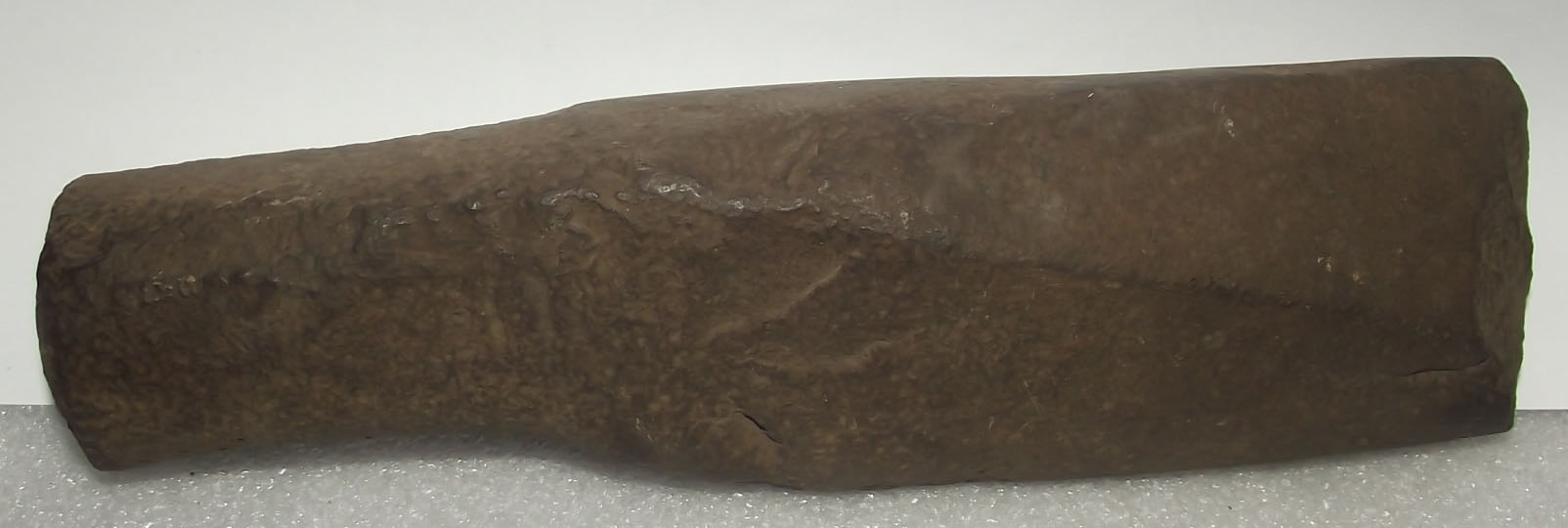
Above are two examples of the Alaskan/Pacific tools in our collection. They are from the 19th and early 20th century. If you or someone you know has knowledge on these tools and would like to help us discover more about them, please contact us.
